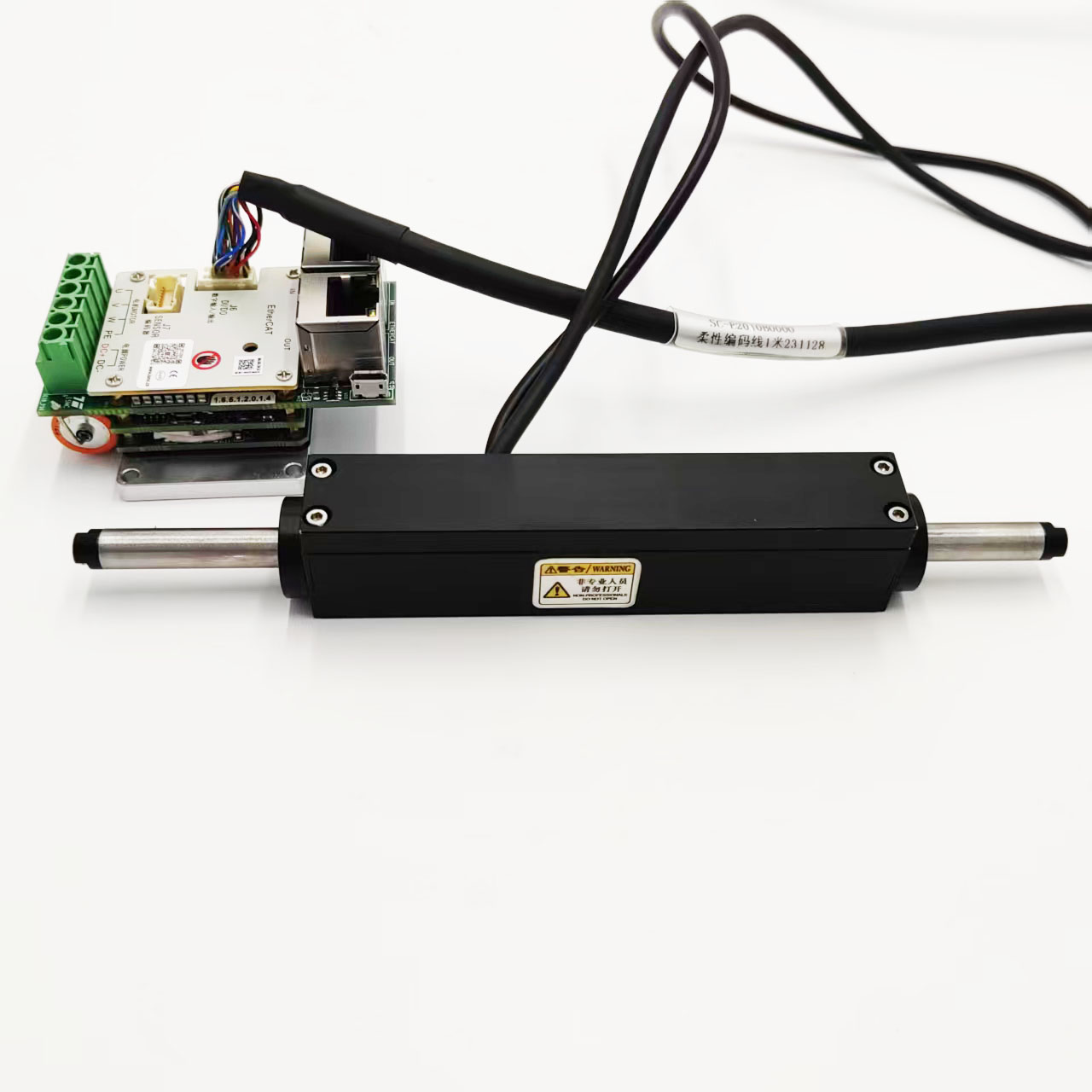
Magnetic axis linear motor
Magnetic axis linear motor is a device that directly converts electrical energy into linear motion, and its core feature is the use of magnetic axis structure in the secondary part. The following is a system analysis of the motor:
1. Structure and composition
Primary part (stator): usually includes three-phase windings, fixed to the equipment base. After being powered on, a traveling wave magnetic field is generated, and the magnetic field is moved by controlling the frequency and phase of the current.
Secondary part (rotor): namely the "magnetic axis", composed of axially arranged permanent magnets (such as neodymium iron boron), with N/S poles alternately distributed. The magnetic axis acts directly as a moving component and interacts with the primary magnetic field to generate thrust.
2. Working principle
Based on Lorentz force and synchronous motor principle:
When three-phase AC power is applied to the primary winding, a magnetic field that moves along the axial direction is generated.
The interaction between the permanent magnet magnetic field and the traveling wave magnetic field forms electromagnetic thrust, driving the magnetic axis to make linear motion.
The motion speed is determined by the power frequency, and the position is precisely adjusted through closed-loop control (such as encoder or grating feedback).
3. Key characteristics
High thrust density: Permanent magnets provide strong magnetic fields, suitable for high thrust demand scenarios.
Zero mechanical transmission: direct drive eliminates backlash and wear, improves accuracy and response speed.
End effect: The distortion of the magnetic field at both ends of a linear motor may cause thrust fluctuations, which need to be compensated for through optimization design (such as extending the primary length) or control algorithms.
Heat dissipation challenge: The heating of the primary winding needs to be managed through a cooling system (such as liquid cooling, air cooling).
4. Application Fields
Precision manufacturing: high-precision positioning of semiconductor lithography machines and CNC machine tools.
Automation: Rapid linear drive for robot grasping and assembly lines.
Transportation: Maglev train propulsion system (requiring long-distance magnetic axis combination design).
5. Analysis of advantages and disadvantages
advantage:
Compact structure and fast dynamic response.
High precision (micrometer level positioning).
Low maintenance cost (contactless transmission).
Disadvantages:
The cost of permanent magnets is high, and the cost of long-distance applications significantly increases.
End effects affect high-speed performance.
The heat dissipation design is complex, and high temperatures may cause demagnetization.
6. Technological Trends
Modular design: Combining multiple primary units to extend travel and reduce costs.
Ironless winding: reduces cogging effect and improves motion smoothness.
Intelligent control: Combining AI algorithms to optimize thrust fluctuation compensation and energy efficiency.
7. Selection considerations
Thrust and speed requirements: Calculate peak thrust and continuous operating conditions based on load.
Travel length: magnetic axis length or modular expansion capability.
Accuracy level: Select a matching position feedback system (such as a grating with a resolution of 0.1 μ m).
Environmental adaptability: dust-proof, high temperature resistant and other protective designs.
summarize
Magnetic axis linear motors occupy an important position in high-end industrial fields due to their high precision and high efficiency. In the future, with the advancement of materials and control technology, its cost is expected to decrease, and its application scope will further expand to civilian fields, such as linear drive devices for smart homes.


















